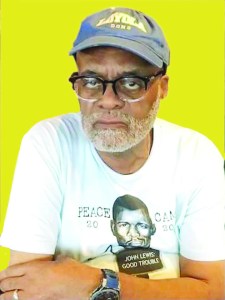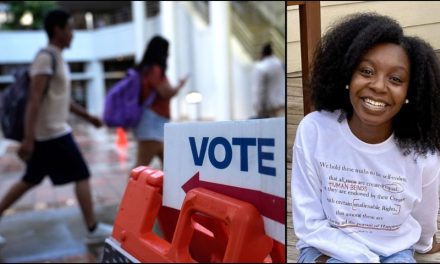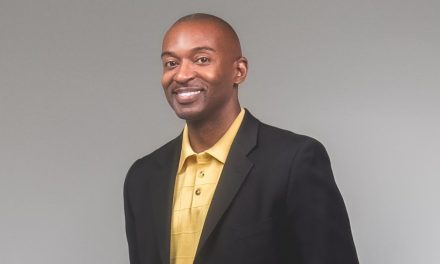By Ralph E. Moore Jr.,
Special to the AFRO
Recreational swimming in Baltimore has traditionally been a complicated subject: in the past there was a nominal fee per swim, pools opened late, there was nothing to sit on poolside and staffing for lifeguards was uncertain, all in the old days.
Swimming is now free of charge if you take a few minutes and register with the Department of Recreation and Parks online in advance. During the summertime and year round, swimming is much easier in Baltimore these days.
According to the Baltimore City Rec and Parks website, there are 23 indoor and outdoor pools with 27,000 swimmers expected during this calendar year. The summer 2023 swim season began on May 27 with Mayor Brandon Scott’s “Big Splash” event. Four Park pools were opened for Saturday and Sunday swim only on Memorial Day weekend, including Druid Hill, Lake Clifton, Riverside and Roosevelt Park. But starting on June 15, Cherry Hill Splash joined the others, which are now open on a seven-day-a-week schedule until the pools close on September 4.
The Aquatics Division’s website is clear and complete with pool hours, pool rules (proper attire, no flotation devices, adult supervision for six-year-olds and younger, no pets and only swim diapers). Rules of conduct are listed and specific rules for dress are spelled out and illustrated. Swimming area locations, hours and phone numbers are listed as well.
The Department of Recreation and Parks is located at 3001 East Drive and its website is bcrp.baltimorecity.gov/contactus. The phone number is 410-396-7900. Reginald Moore (no relation) serves as the executive director.
Programming for swimming in Baltimore is strong, but with a population of approximately 500,000 citizens in Baltimore, why is the Aquatics Division projecting only 27,000 swimmers at city pools all season? Why so few? Why not go swimming in Baltimore? Is it because African Americans and swimming don’t go together? And if so, why is that? Let’s see…
Published reports by the USA Swimming Foundation say 64 percent of Black children cannot swim very much or not at all. That is in comparison to the 45 percent Hispanic and 40 percent White children, non-swimmers. The national YMCA’s research sadly informs the public that small Black children (five to 10-year-olds) have a chance to drown in swimming pools that is five and a half times greater than that of their White counterparts.
It’s well-known that the racial segregation of America’s past found its way into swimming pools and beaches. Blacks were not allowed to swim where Whites enjoyed time in the water. The discriminatory mistreatment was real and was deeply embedded in the minds of Blacks and Brown people.
“This discrimination has cast a long shadow to the present day,” according to Dr. Jeff White, author of “Contested Waters: A Social History of Swimming Pools in America (2007, The University of North Carolina Press).”
White informs us in his book that the fight to desegregate municipal swimming pools was “more sensitive than integrating schools in many places.” From the Olympic pool to school teams at every level, swimming is still perceived as a “White thing.”
Though White Americans may have a monopoly on the swimming sports of today, Africans were known centuries ago as top swimmers in the world– especially because they learned to swim as soon as they could walk.
Karen Eva Carr’s 2022 book, ‘Shifting Currents: A World History of Swimming,’ states that the earliest human beings [Africans] from 100,000 years ago, “taught themselves how to swim for food and for pleasure.” America Whitewashed the skill and further distanced African Americans from the sport by banning them from pools, lakes and bodies of water across the country.
Segregation laws made it so places where Blacks could learn to swim or simply to cool off were few and far in between– if available at all. Because of perceived tight fitting swimming outfits, Whites began to consider blacks and Whites swimming together too potentially sexually attractive or even provocative for their comfort, and started legal segregation to stop Blacks from swimming altogether. Silly as it may seem to some nowadays, keeping Black men away from White women was a huge motivator for legal, fully enforced separation and deprivation of African-American rights.
The racial divide was also implemented through violence, as research by Dr. White informs us. In August 1931, Blacks in the Highland Park area of Pittsburgh, Penn. were allowed into a city pool only to be intimidated by the large crowd of screaming White swimmers. The pool, which was paid for in part by tax-paying Black residents, became a brutal scene. Some Black swimmers were held under water to the point of being nearly drowned, moving the protestors to give up and leave the pool.
Today, swimming pools are no longer segregated or inaccessible. Our ancestors fought to make it that way– so why not get in the water and learn to swim?
There are places around the Baltimore area where one can learn to swim. The YMCA of Maryland is a great place to start looking. Check out some of the locations below if you do not know how to swim– it could save your life one day!
The Druid Hill Y at 1609 Druid Hill Avenue, Baltimore, 21217, 410-728-1600
The Weinberg YMCA at 900 E. 33rd Street Baltimore, 21218, 410-889-9632
The Towson Family YMCA at 600 W. Chesapeake Avenue, Towson, 410-823-8020
The YMCA Western Branch at 650 S. Rolling Road, Catonsville, 21228, 410-747-0622
There are YMCA swimming lessons in Halethorpe, Parkville and Randallstown. The Y website (ymca.org) can give specific details for those locations (410-669-6626).
There are also various swim clubs in the area to approach for lessons: Clipper Mill Pool, Swan Lake Swim Club, Meadow Aquatic and Fitness Center and the Hillcrest Swim Club all offer lessons. Access to lessons at the clubs might not be nearly as easy as at the Y. Either way, go and learn and incorporate the ability to swim inti your family’s generational legacy. They are teaching children how to swim with their clothes on these days. Swimming accidents happen fully clothed, so the reasoning is that learning to swim in clothes more closely resembles how accidents happen.
Learning to swim is not just for White people any more– actually, it never was. Now is the time to go learn! You’ll be so glad you did.
The post Black folks and swimming don’t always go together–now is the time to learn this lifesaving skill appeared first on AFRO American Newspapers .











